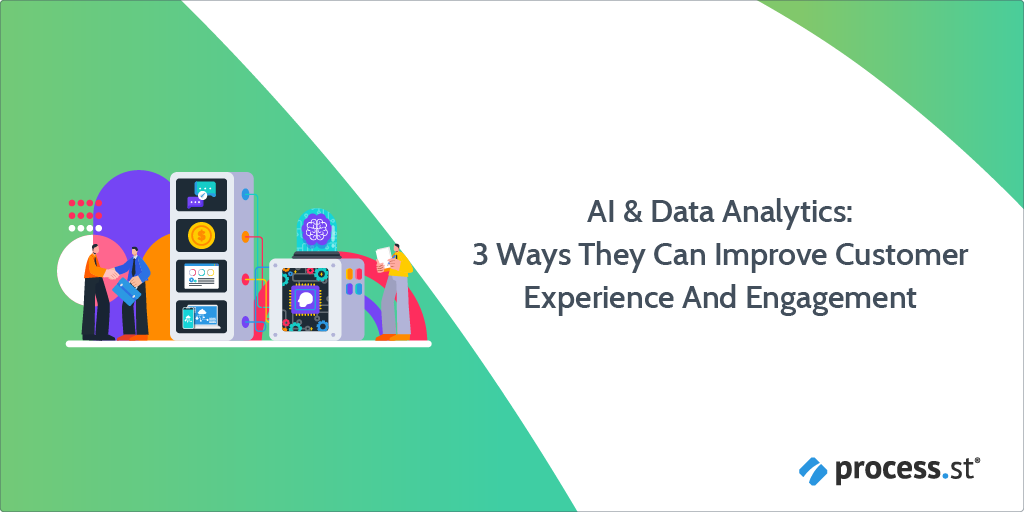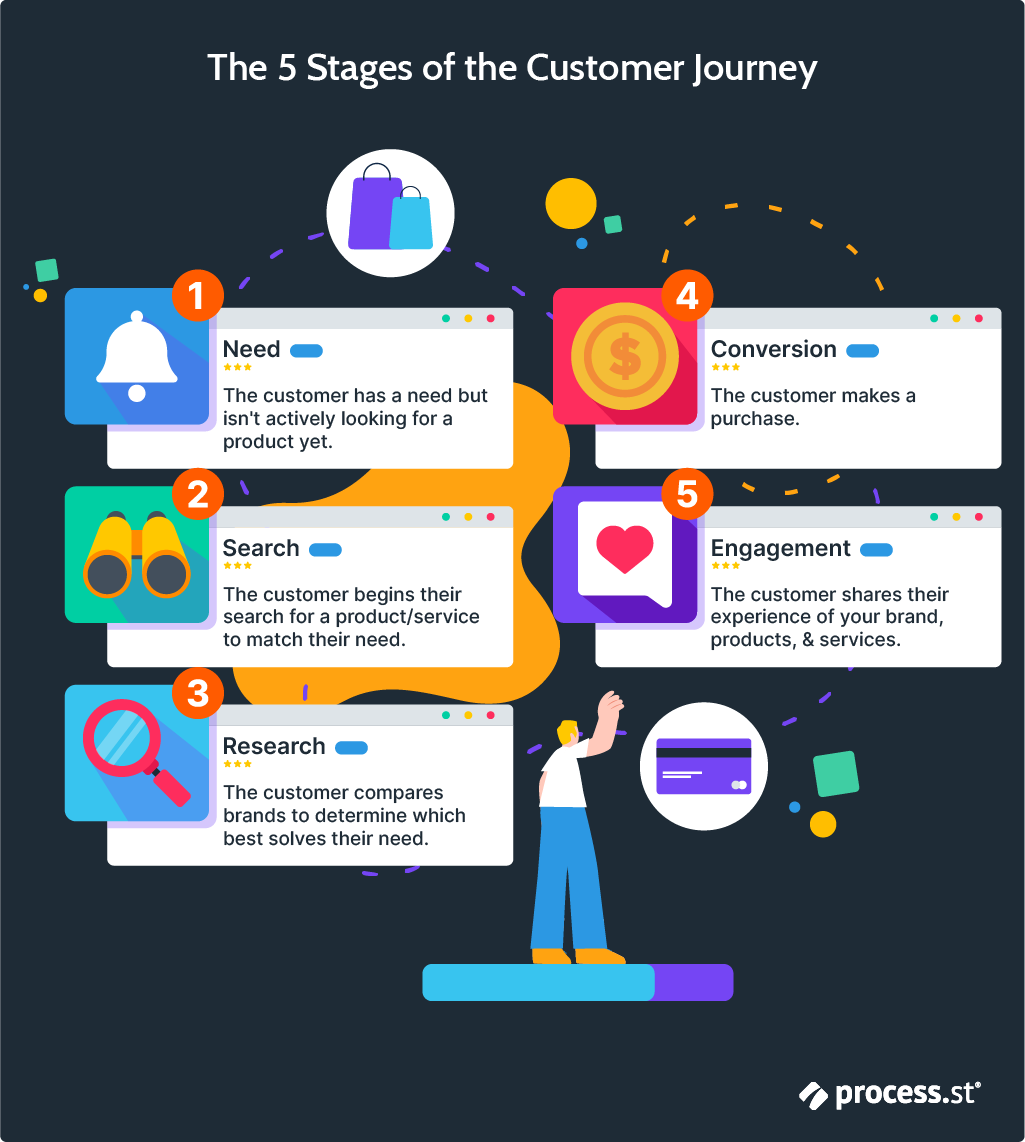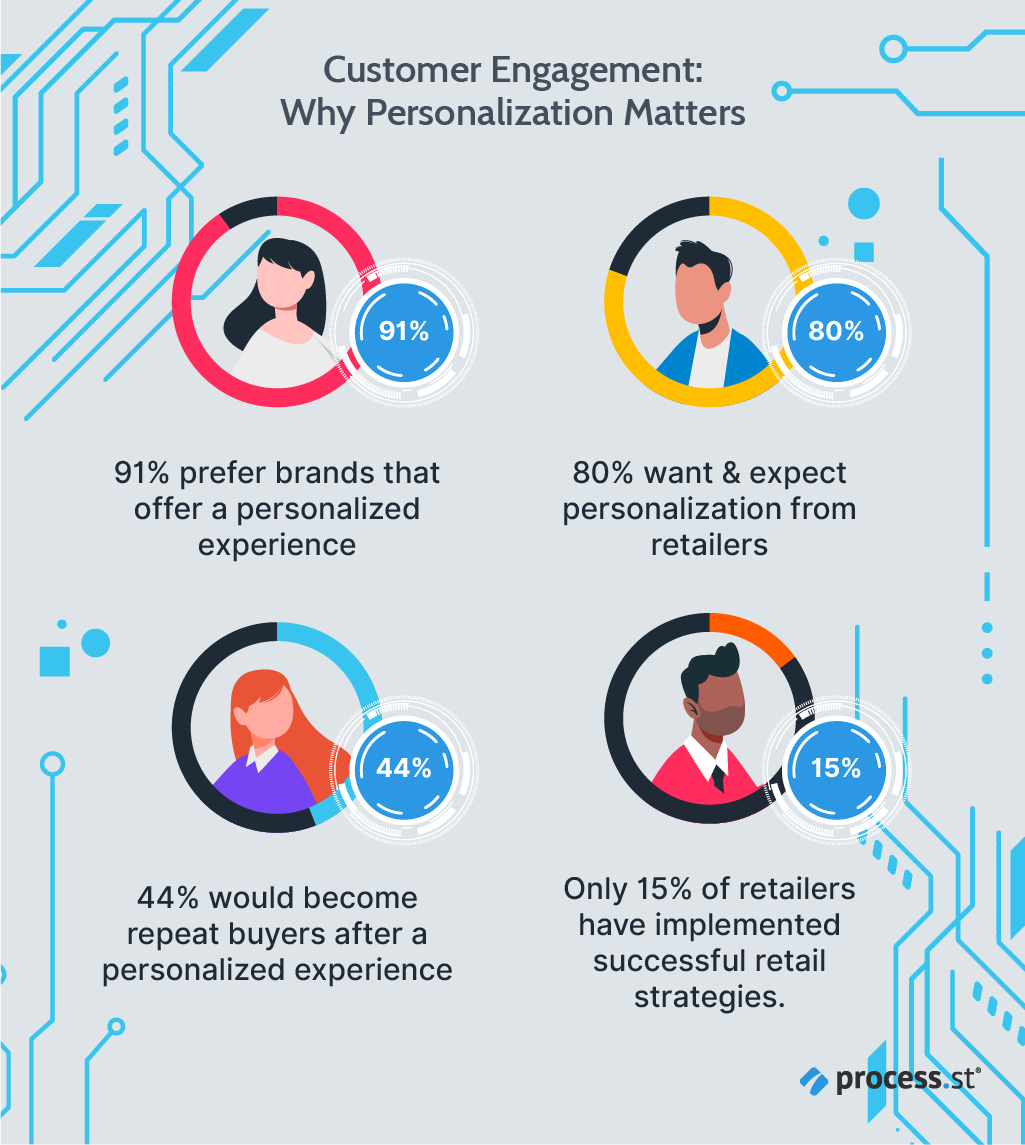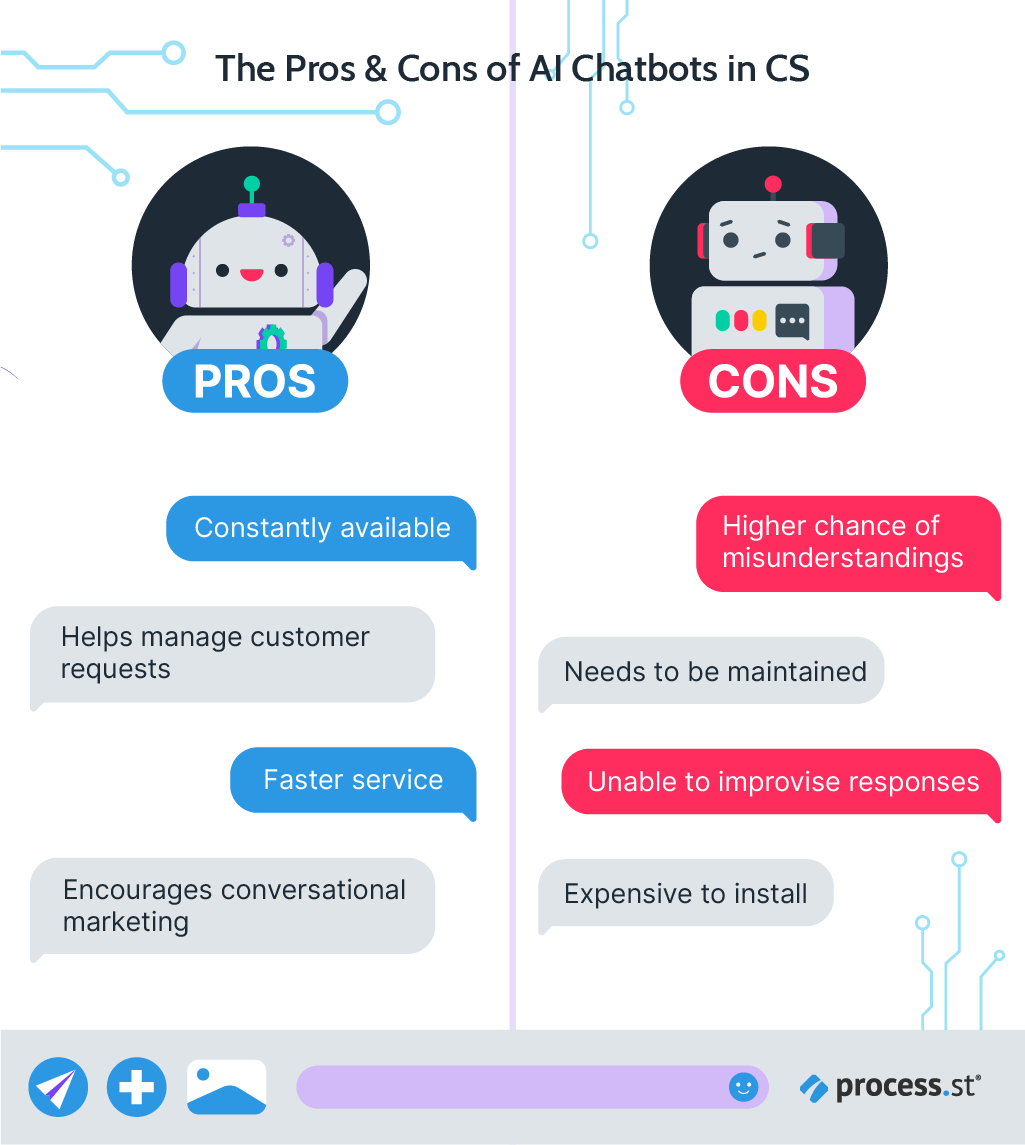 Since 2015, Nahla Davies has been working with enterprise clients around the world developing RegTech protocols and best practices. She’s also worked with both enterprise and sovereign governments as a key contributor for notable public projects like DCOM.
Since 2015, Nahla Davies has been working with enterprise clients around the world developing RegTech protocols and best practices. She’s also worked with both enterprise and sovereign governments as a key contributor for notable public projects like DCOM.
If the pandemic has shown the world anything, it’s that business professionals and, specifically, marketers can still meaningfully engage customers in an increasingly digital world. It’s undoubtedly challenging for marketers to continue providing a seamless customer experience across different digital channels such as social media.
Thankfully, though, factors such as artificial intelligence (AI) and data analytics can make multi-channel customer experiences engaging across the entire customer journey — from product consideration all the way to purchase.
Businesses have proven themselves both capable and willing to remain adaptable amidst the tumultuous COVID pandemic in order to understand business problems and subsequent opportunities. The process of actually understanding these problems and opportunities, however, isn’t exactly straightforward.
Analytics, data, and artificial intelligence have the potential to enrich marketers’ understanding of their customers’ experiences in order to deliver meaningful, relevant experiences in the future. To that end, let’s quickly take a look at how data and analytics can be invaluable for marketers interested in enhancing the complete customer journey that they provide across different digital channels.
- Tailored strategies enhance customer experiences
- Analytics and data-driven personalization
- Automation increases time for customer interaction
- Chatbots are becoming more useful than ever to customers
- AI & data analytics: The trend that keeps growing
Tailored strategies enhance customer experiences
Marketers have the responsibility of considering an entire customer journey to better engage customers along each step of the process.
This begins with the need phase – where a customer determines they have an issue that needs solving — all the way through to purchasing, using, and even recommending a product or service.
 The best way to determine how to improve the customer journey across each of these phases? Creating a process of customer feedback analysis.
The best way to determine how to improve the customer journey across each of these phases? Creating a process of customer feedback analysis.
Customer feedback doesn’t just come from things such as a contact form — it comes from everywhere, which can be both a blessing and a curse. A curse, in that it can be seemingly impossible to scrape customer feedback from all of your business’s online presences; a blessing, in that tools such as data analysis and AI can reliably aggregate all this customer feedback into a digestible and comprehensive manner.
Wide-scale aggregation of customer feedback is important to marketers who now need to reassess the traditional hybrid approach of digital and physical customer engagement tactics. It’s no longer an option to rely solely on leads generated from, say, in-person events and solicit feedback from those events.
Marketers instead must think about how to best maximize their impact through digital channels that make up their company’s global footprint. With innovations like machine learning (ML) and AI, marketers can analyze massive sets of data with great accuracy to understand which services customers value most across their customer experiences, such as self-service tools like chatbots and virtual assistants.
The ability to analyze large sets of data is particularly important in a post-COVID business world. B2B companies and their marketing teams have the opportunity to understand and deliver on their globally-set priorities as well as develop a localized approach with teams of regional and core domain experts that analyze historical campaign performance, develop targeted segmentation, and incorporate analysis, testing, and insights.
As strategies to enhance customer experiences become more tailored based on the power of data and analytics, companies must also use AI and ML to maintain personalized messaging across their geographies and digital channels.
Analytics and data-driven personalization
AI and ML make it easier for businesses to connect with customers across multiple digital channels to analyze customer data and turn them into actionable business intelligence. Strategies to enhance the customer experience become clearer to develop and pursue once businesses and their marketing teams study their sales cycle – from lead generation and conversion to post-sales support – with the power of data and analytics.
Companies shouldn’t stop at just analyzing data, however: It’s important that they use AI-augmented marketing to leverage their customers’ desire for personalization. After all, customers almost always wish to be better understood and provide the value they’re looking for based on their unique needs and wants.
 When considering what to achieve with AI-augmented marketing, companies can typically start by using AI to create personalized product and service recommendations for customers. AI and ML make it realistic for B2B companies to consistently personalize the recommendations they display to customers which, in turn, drive traffic to more digital channels and increase the rate of conversions of prospects who reach those channels.
When considering what to achieve with AI-augmented marketing, companies can typically start by using AI to create personalized product and service recommendations for customers. AI and ML make it realistic for B2B companies to consistently personalize the recommendations they display to customers which, in turn, drive traffic to more digital channels and increase the rate of conversions of prospects who reach those channels.
Personalized recommendations can take many forms; popular examples include informative, attention-grabbing ads that help customers understand why your products and services address specific needs identified by analytics.
Given the remote working environments in which many B2B companies are operating, it may be wise to encourage collaboration between marketing teams and IT departments. Your business’s developers and web designers may be able to further expedite the rate at which you create a steady stream of new, personalized recommendations for customers.
After all, most developers started their career in a field other than development, so encourage collaboration between your IT and marketing teams when possible. This collaboration should focus on the automation of content creation and SEO for continuous and improved customer interaction.
There’s no longer an excuse for businesses to lack a multi-channel presence through which customers can connect with them. Fortunately, AI and ML now make it simpler than ever to take advantage of remote working environments and coordinate department-wide efforts to widen the available stream of personalized recommendations across these different channels.
Automation increases time for customer interaction
Tools that transform the customer experience with innovations like AI data not only help marketers better recommend products and services to customers; they also help automate content creation and search engine optimization (SEO) to generate keywords and automate tedious processes like ad tagging so that marketers have more time to spend on face-to-face customer interactions.
AI and ML efficiently create content generation and SEO automation tools with features ranging from building blog posts to generating SEO keywords to automated ad tagging. These tools let marketers focus more of their time on customer interactions rather than on tedious, time-consuming background tasks.
However, privacy concerns may unsettle customers who are wary of data collection methods AI and ML use to supply businesses with insight, efficiencies, and customization to their customer experiences.
Marketers should be prepared to explain a bit more about data privacy and compliance with customers as well as their business leaders should the topic arise during discussions about AI-augmented customer experiences.
Businesses and their marketers must remind key business stakeholders as well as their customers that PCI compliance is tantamount to the safe success of AI-driven marketing. This protects personal and financial customer information from falling into the hands of cybercriminals and keeps the ecosystem of digital payments secure.
Arguably the handiest aspect of AI-enabled chatbots is their ability to operate in conjunction with each other. Chatbots, as well as any other autonomous customer experience service, can quickly resolve issues such as transactional problems with their rapid information discovery capabilities. Some AI-enabled chatbots, for example, can use natural language processing to quickly resolve simple questions that rely on complex data.
This information discovery extends beyond customer service inquiries; chatbots can even analyze the unique history of a customer to provide personalized offers or advertisements tailored specifically to the sales channel in which that customer is potentially buying. Rich imagery, photos of product offerings, and even hyperlinks to product pages are all possible pieces of personalized offers that AI can procure for interested customers.
AI and ML not only transform the way marketers and their businesses solicit customer data and feedback; they make it feasible to automate the process of creating content that appeals to customers, too. Automated content creation, as well as AI-accelerated SEO efforts that generate keywords and automate tasks such as ad tagging, frees up time for marketers to focus their full attention on the existing leads with whom they’re interacting.
This increased time that marketers can spend with customers becomes even greater when businesses adopt AI-enabled chatbots, which are both useful to customers as well as marketers with limited time on their hands.
Chatbots are becoming more useful than ever to customers
AI chatbots are finally coming of age as more businesses deploy AI-based chatbot applications. More than 1,000 business leaders are now relying on AI-enabled chatbots with which they can more closely follow the sales and marketing efforts of their business, and with good reason: Although not a replacement for human contact and interaction, AI-enabled chatbots and their interactions with businesses can provide an important balance between self-service and face-to-face interaction with a real customer service representative.
AI chatbots are not only coming of age in a post-COVID landscape of largely remote business operations — they are also the leading use of artificial intelligence among business leaders and their companies. AI-enabled interactions with businesses, including chatbots as well as virtual assistants and biometric-enabled readers and facial recognition scanners instill a significant sense of trust in customers.
Not only do chatbots inspire confidence among customers, but they also inspire the same feelings of satisfaction and trust among marketers who can rely on bots to perform lead qualification and boost the efficiency and efficacy of their sales and marketing efforts.
Specifically, marketers can rely on AI-enabled chatbots because of certain advantages they have over their human counterparts.
For one, chatbots can interact anytime and anywhere with customers — 24 hours a day, 365 days a year, all in real-time. Potential customers of a business don’t need to waste time filling out and submitting inquiry forms, don’t need to wait for a response from a human customer service representative, and can expect instant, tailored advice regarding the products or services they’re interested in.
This gives marketers the freedom to sit back and focus on existing leads while chatbots solicit new prospects at the same time. Chatbots do a fantastic job of asking customers to rate their experience and collecting suggestions on how to improve your sales process.
 The adoption of AI-enabled chatbots makes particular sense for businesses and their marketing departments if they’re already deploying AI-based tools to assist with content creation and mundane SEO tasks.
The adoption of AI-enabled chatbots makes particular sense for businesses and their marketing departments if they’re already deploying AI-based tools to assist with content creation and mundane SEO tasks.
Chatbots take a large load off the hands of marketers who need to spend time conversing and converting leads and who may not be able to analyze and collect customer feedback on their experiences and impressions of advertising and marketing techniques.
AI & data analytics: The trend that keeps growing
AI and data analytics are rapidly changing and improving the ways with which businesses and their marketers engage customers across multiple digital channels. Strategies to enhance the customer experience begin with the analysis of large sets of customer feedback and data pulled from different channels.
Wide-scale aggregation of customer feedback from these multiple channels allows marketers to reassess their traditional hybrid approach of digital and physical customer engagement with massive sets of data and improved insight into the services customers value most.
Analysis of such large sets of data is particularly important in the post-COVID business world that demands B2B companies and their marketing teams to develop localized and global approaches to analyzing historical marketing campaign performance, developing targeted segmentation, and incorporating AI-enabled analysis, testing, and insight.
From there, marketers can use the data they’ve gathered to drive personalization with consistent streams of targeted advertisements. AI and ML let marketers spend more quality time with customers — just be careful to remind your business leaders as well as your customers that measures such as PCI compliance are in place to safeguard personal and financial data that your AI-augmented campaigns gather.
Finally, businesses should consider adopting AI-enabled chatbots, which are becoming more useful than ever to both customers as well as marketers. AI-enabled chatbots provide a crucial balance between automated self-service as well as face-to-face, human interaction provided by real customer service representatives. These chatbots remain the leading use of artificial intelligence among the majority of business leaders due to their ability to inspire confidence and trust among customers.
Is AI part of your customer engagement? Share your experience in the comments!







Leks Drakos
Leks Drakos, Ph.D. is a rogue academic with a PhD from the University of Kent (Paris and Canterbury). Research interests include HR, DEIA, contemporary culture, post-apocalyptica, and monster studies. Twitter: @leksikality [he/him]